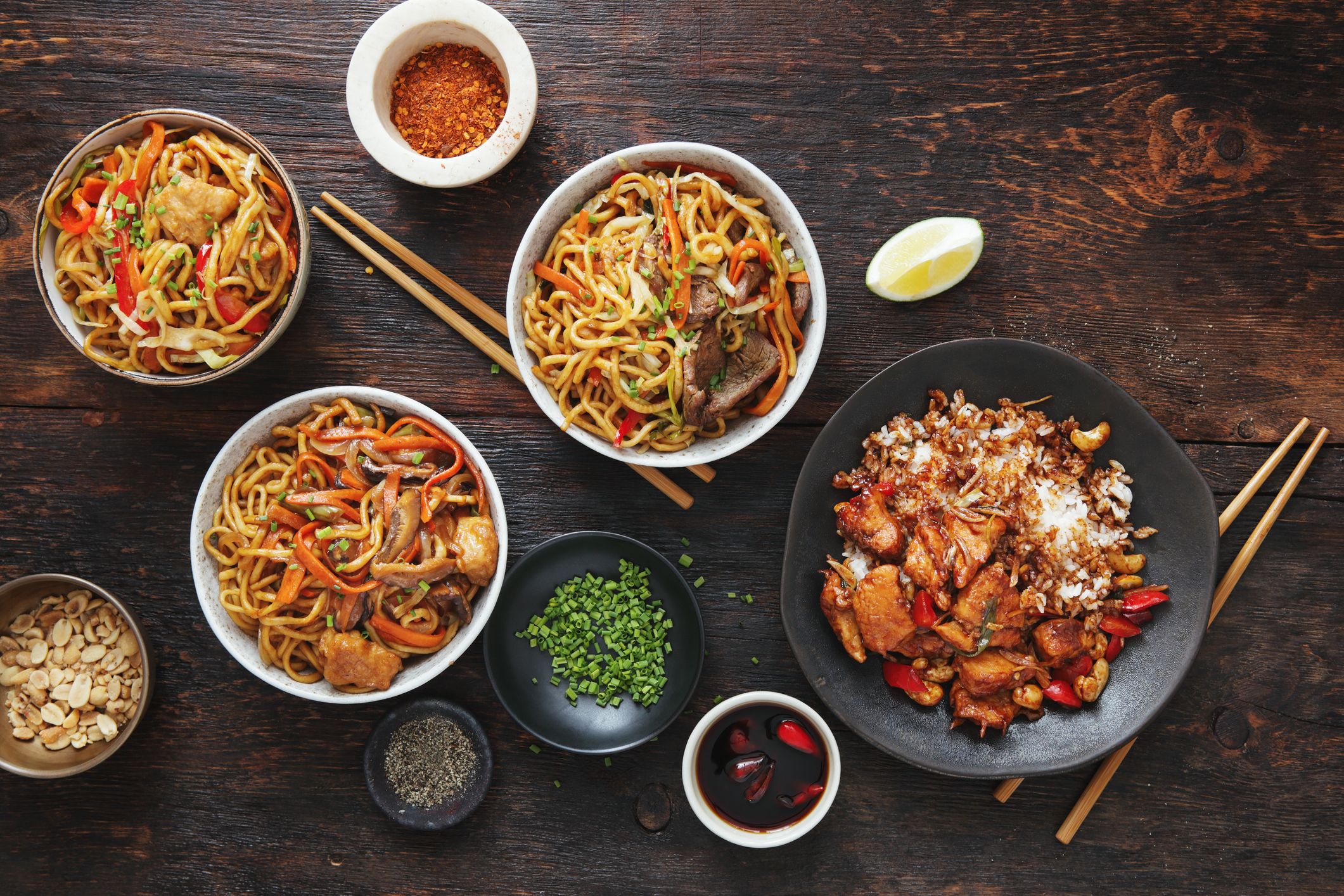Best Asian Flavors: A Journey Through Authentic Tastes
Asian cuisine is rich in flavors, with each country bringing its own unique ingredients and methods of preparation to the table. From the spicy curries of India to the savory dishes of Japan, the variety of Asian flavors is vast and ever-evolving. In this article, we’ll take you on a journey through the best flavors that define Asian cooking, highlighting some key ingredients, cooking techniques, and famous dishes that have earned a place in global cuisine.
The Essence of Asian Cuisine
Asian cuisine is known for its bold and complex flavors that come from a mix of spices, herbs, and fresh ingredients. The combination of salty, sweet, sour, bitter, and umami flavors makes these dishes distinct. But what truly defines these flavors is the balance they maintain, making each dish an explosion of taste that engages all the senses.
Common Ingredients That Shape Asian Flavors
To truly understand Asian flavors, it’s important to recognize the key ingredients that define the dishes. Below are some staples used across the continent:
-
Soy Sauce: A cornerstone of Chinese and Japanese cooking, soy sauce adds a salty and umami flavor to many dishes.
-
Fish Sauce: Popular in Southeast Asia, particularly in Vietnam and Thailand, fish sauce gives a salty, savory, and sometimes pungent flavor.
-
Ginger: Used across many Asian cuisines, ginger imparts a fresh, spicy flavor that complements both savory and sweet dishes.
-
Garlic: Whether in stir-fries or soups, garlic is a staple that enhances the flavor of almost every Asian dish.
-
Lemongrass: A fragrant herb used in Thai and Vietnamese cooking, lemongrass provides a citrusy, slightly floral flavor.
Must-Try Asian Flavors from Different Countries
1. Thai Flavors: Sweet, Sour, Salty, and Spicy
Thailand’s cuisine is renowned for its balance of sweet, sour, salty, and spicy flavors. A prime example is the famous Pad Thai, a stir-fried noodle dish that combines tamarind paste for sourness, fish sauce for saltiness, sugar for sweetness, and chili for heat.
-
Curry: Thai curries are rich and aromatic, with ingredients like coconut milk adding creaminess and Thai basil adding a fresh, peppery bite.
-
Tom Yum Soup: This classic soup brings together sourness from lime, heat from chilies, and the umami of fish sauce.

2. Chinese Flavors: Umami and Sweetness
Chinese cuisine is famous for its umami flavors, often achieved through soy sauce, oyster sauce, and fermented products. A dish like Kung Pao Chicken showcases this flavor profile with its combination of soy sauce, sugar, and chilies.
-
Five-Spice Powder: This blend of star anise, cloves, Chinese cinnamon, Sichuan peppercorns, and fennel seeds adds a deep and complex flavor to Chinese dishes.
-
Dumplings: Filled with savory meats and vegetables, dumplings often carry the bold flavors of ginger and soy sauce, with a touch of sweetness from hoisin sauce.
3. Japanese Flavors: Subtle and Umami
Japanese cuisine emphasizes umami flavors that bring depth and richness without overpowering the natural taste of ingredients. Soy sauce, miso, and kombu (dried kelp) are key elements in creating the umami flavor.
-
Sushi: The delicate flavor of sushi rice paired with the fresh taste of fish is complemented by a hint of wasabi and pickled ginger.
-
Ramen: This noodle soup has a rich broth, made from ingredients like miso or shoyu (soy sauce), and topped with chashu (braised pork), boiled eggs, and vegetables.
4. Indian Flavors: Spicy and Aromatic
Indian cuisine is a paradise for spice lovers. With a complex array of spices like cumin, turmeric, cardamom, cloves, and coriander, each dish tells a unique story through its seasoning.
-
Curry: Indian curries are rich with spices that vary in heat and complexity, from buttery chicken masala to the fiery vindaloo.
-
Samosas: A perfect snack, samosas are deep-fried pastries filled with spiced potatoes, peas, and sometimes meat, offering a combination of savory and slightly sweet flavors.

5. Korean Flavors: Fermented and Spicy
Korean cuisine is known for its use of fermented ingredients and bold, spicy flavors. Kimchi, a fermented vegetable dish made with cabbage and radishes, is a staple that introduces sour and spicy flavors to meals.
-
Bulgogi: This grilled marinated beef is infused with sweet and savory flavors from soy sauce, sugar, and sesame oil.
-
Bibimbap: A rice dish topped with vegetables, eggs, and gochujang (fermented chili paste), it delivers a spicy, savory, and umami punch.
Asian Flavors in Modern Cuisine
With globalization, Asian flavors have found their way into fusion cuisines around the world. From sushi burritos to Korean tacos, chefs are experimenting with traditional Asian flavors, creating exciting new dishes that appeal to a broader audience.
-
Asian BBQ: The blend of soy sauce, ginger, and garlic used in marinades has made Asian-style BBQ popular in many parts of the world.
-
Fusion Dishes: Asian ingredients like miso, sriracha, and sesame oil are now common in dishes like macaroni and cheese, burgers, and even salads.
Why You Should Embrace Asian Flavors
Embracing Asian flavors can elevate your cooking and bring diversity to your meals. The balance of flavors, the use of fresh ingredients, and the complexity of spices and herbs create a culinary experience that is unlike any other. Whether you’re cooking at home or dining out, Asian flavors offer endless possibilities to explore.
FAQs
1. What are the most common Asian spices?
Common Asian spices include cumin, turmeric, coriander, cardamom, ginger, garlic, and chilies. These spices create the distinct flavors seen across Asian cuisines.
2. How can I start cooking with Asian flavors?
Start by experimenting with soy sauce, fish sauce, and ginger. Incorporating these ingredients into stir-fries, soups, and marinades can help you understand the flavor balance in Asian dishes.
3. What are the healthiest Asian dishes?
Many Asian dishes are made with fresh vegetables, lean proteins, and herbs. Sushi, kimchi, pho, and stir-fried vegetables are some examples of healthy options.
4. How can I make Asian food at home?
Making Asian food at home is easy with the right ingredients. Stock your kitchen with essential items like soy sauce, rice vinegar, sesame oil, and curry pastes. Simple dishes like fried rice or noodle soups are a great place to start.
Conclusion
Asian flavors are a treasure trove of unique, bold, and balanced tastes that can transform your cooking. By using ingredients like soy sauce, fish sauce, coconut milk, and fresh herbs, you can create dishes that transport your taste buds to the streets of Bangkok, the kitchens of Tokyo, or the spice markets of India. Whether you are a novice or an experienced cook, there’s always something new to discover in the world of Asian cuisine.
This article was brought to you by DUYTHIN.DIGITAL, your go-to platform for automation tools for Facebook, Zalo, Telegram, Google SEO, TikTok, and more. We help businesses streamline their processes with cutting-edge tools for posting, messaging, data scraping, and SEO. Explore our services to grow your digital presence today!




